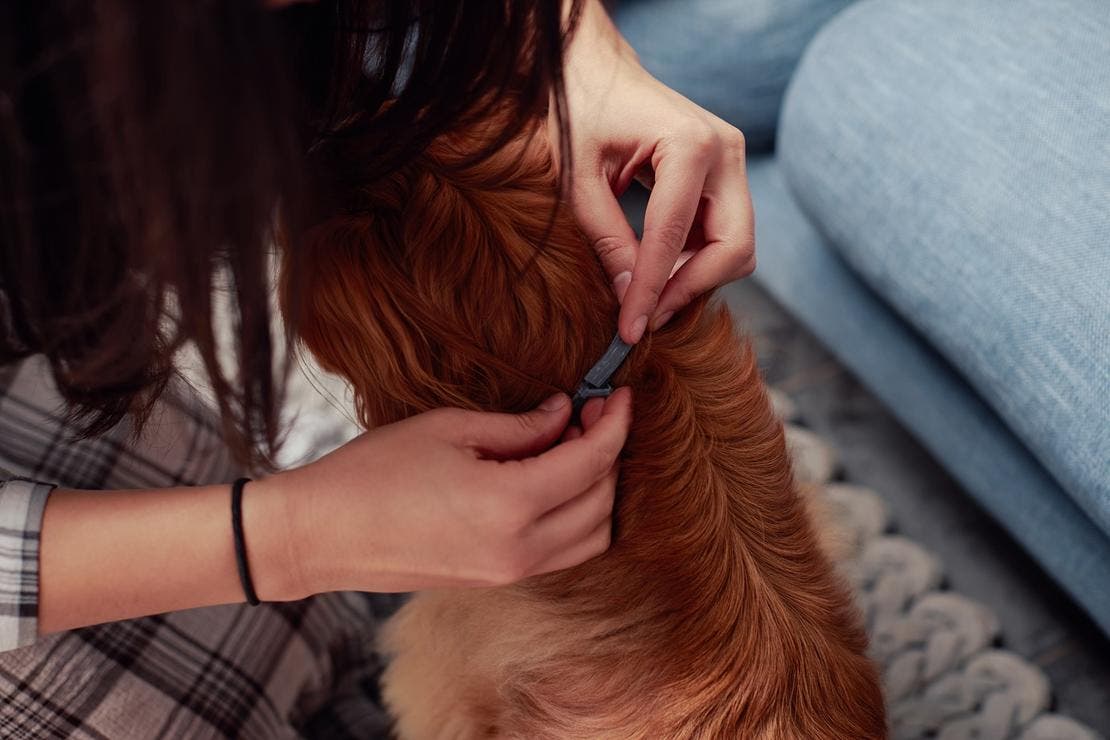Fleas can strike fear into the heart of any pet owner. Finding a flea on your cat or dog risks their health and likely means an infestation of hundreds more in your home.
It’s very easy for cats and dogs to catch fleas but it’s just as simple to prevent your pets getting fleas in the first place. Here are our expert flea prevention tips every owner needs to know.
How do fleas spread?
Fleas have four life stages – egg, larva, pupa and adult – which helps them to survive year-round.
For example, flea pupae can lay dormant for many months before breaking out as a fully formed adult flea. In some instances, we may not know these pupae are in our homes, hiding deep in carpets and rugs, until they are awoken by the warmth of our central heating, vibrations, or the carbon dioxide we breathe out, all of which are triggers for adult fleas to emerge from their pupae.
When we understand the flea life cycle, we can disrupt it and prevent them from multiplying.
Flea prevention tips for dog and cat owners
The good news is that preventing fleas on pets and in your home is easy.
1.Use a flea preventative on your pet year-round
Although fleas are happiest in warmer temperatures they’re not just a summer pest and they pose a risk to our pets all year-round. Thanks to central heating, fleas can survive indoors during winter months, that’s why vets recommend using flea preventative products throughout the year to keep pets flea free.
Seresto Flea and Tick Control collar offers the longest protection from fleas and ticks in one application, helping to prevent fleas on your cat or dog for 7-8 months. The flea collar is clinically proven to kill fleas within 24 hours through contact. Plus, Seresto is water resistant, non greasy and odourless. Seresto also has a safety release mechanism so dogs can continue exploring come rain or shine.

2.Keep your home tidy
As a pet owner, it’s always a good idea to vacuum flooring and furniture, and wash bedding and cushions regularly to help control any pesky critters that have found their way into your home.
If you experience a flea infestation at home, you’ll need to vacuum daily to remove some of the immature life cycle stages of the flea around the home or buried in the fibres to stop them from developing into adult fleas. Washing bedding on a hot wash will also help to kill all stages of fleas.
You can find more advice on how to cope with a home infestation here.
3.Frequently check your pet’s fur
Combing through your pet’s coat is an ideal way to keep an eye on any external parasites that may be lurking in their fur. Special flea combs have fine teeth designed to help you spot fleas or signs of fleas, such as flea droppings, known as ‘flea dirt’, which looks like small black specks on the skin.
You can make it part of the time you spend grooming your pet, which is an important time to bond with your cat or dog.
4.Attend vet check-ups
At your pet's routine check-up your vet will discuss the risk of any parasite problems and can also provide guidance on the most suitable flea treatments for your pet and your lifestyle, and answer any questions around flea control products.

What if I don’t use a regular flea preventative?
Without protection from bloodsucking fleas, dogs and cats are at risk of becoming a tasty blood meal. While fleas are an itchy nuisance, they can also cause more serious health problems to pets and even pose a risk to you and your family.
- Flea Allergy Dermatitis: flea bites cause pets irritation, leading them to scratch intensely, which can be distressing. But Flea Allergy Dermatitis (FAD) makes this irritation even more intense. FAD is an allergic reaction to flea saliva which causes severe skin discomfort and pets often scratch so much they lick and bite their skin.
Find out more about FAD in our helpful guide
- Anaemia: puppies and kittens with a heavy flea burden can suffer with anaemia due to such significant blood loss. You can spot the signs of anaemia which include pale gums, weakness and fatigue. Speak to your vet at the first moment you suspect your puppy or kitten may have fleas, for example, if they are scratching more than normal.
- Tapeworms: fleas can carry the tapeworm parasite and transmit it to your pet. A tapeworm infestation occurs when a pet ingests an infected flea, usually while grooming. For this reason, it’s important to worm your pet regularly alongside your flea preventative.
If you notice your pet is itching around its back end or, if you spot white rice-like segments in their poo, these are signs your pet has tapeworm and will need to be treated.
Bartonella: pets, specifically cats, can also become infected with Bartonella by ingesting an infected flea. Often referred to as cat scratch fever, Bartonella can be transmitted to humans through a cat scratching or biting. Your cat may not show any symptoms of Bartonella at first, but swollen glands, lethargy and sore muscles are all signs that you need to speak to your vet.

Use Medicines Responsibly.
Seresto Flea and Tick Control collar contains imidacloprid and flumethrin (NFA-VPS). Further information is available from the datasheet at www.noahcompendium.co.uk or on request. The Bayer cross is a Registered trademark of Bayer AG. Seresto, Elanco and the diagonal bar logo are trademarks of Elanco or its affiliates. Elanco UK AH Ltd., Form 2, Bartley Wood Business Park, Bartley Way, Hook, RG27 9XA. Tel. 01256 353131
